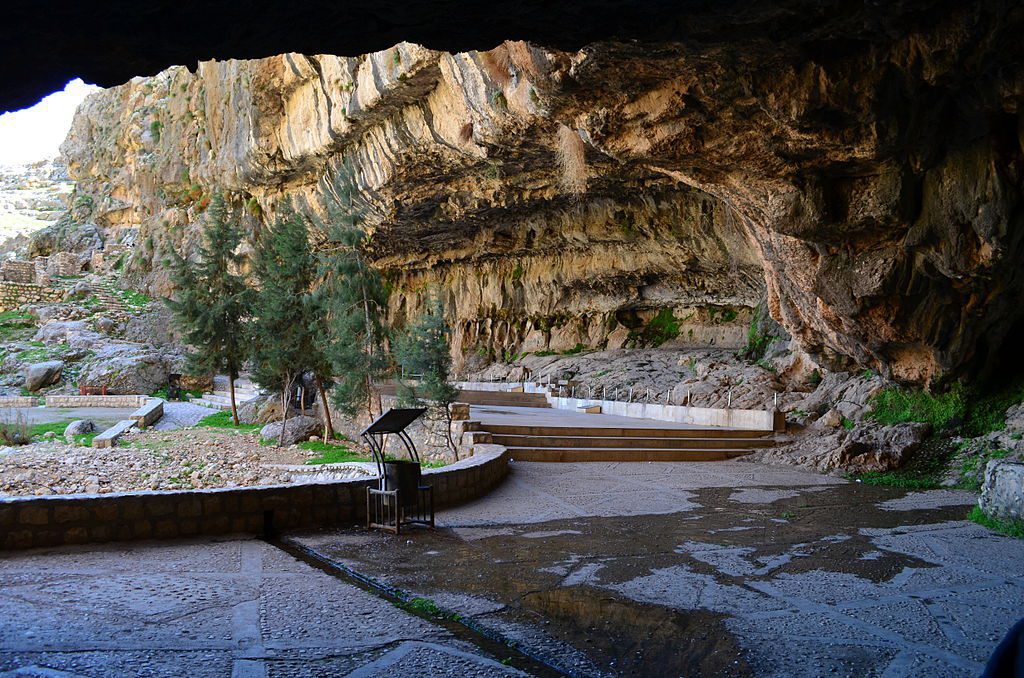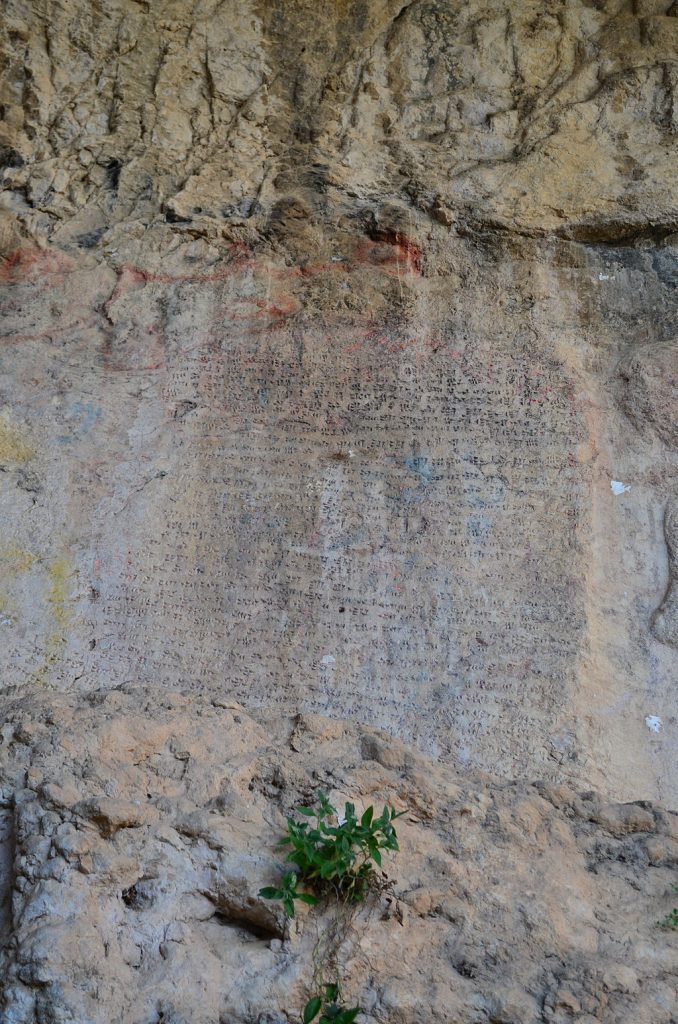Table of Contents
Are you fascinated by ancient civilizations and their remnants? Then Eshkaft-e Salman is a must-visit destination for you. Located in Khuzestan province, Iran, this archeological site was once an important region during the Elamite civilization that dates back to 3200 BC. Today, it is a historical, touristic, recreational, and cultural center for Iran. Visitors can expect to be amazed by beautiful nature, mountains, rocks, caves, waterfalls, ancient monuments, and reliefs.
But what makes Eshkaft-e Salman so special? Let’s explore the wonders of this magnificent site, and the rich history of the Elamite civilization that left its mark on this land.
How to Get to Eshkaft-e Salman
To reach Eshkaft-e Salman, visitors can take a plane to Ahvaz International Airport, which is well-connected to major cities in Iran and the Middle East. From the airport, visitors can take a bus, taxi, or private car to Izeh, which is the closest city to the site. The journey from Ahvaz to Izeh takes around 2 hours by car. Alternatively, visitors can take a bus from Ahvaz to Izeh, which takes around 3 hours. Once in Izeh, visitors can hire a taxi or private car to drive to Eshkaft-e Salman, which is located about 35 kilometers from the city. The journey from Izeh to the site takes around 2 and a half hours by car. While the journey to Eshkaft-e Salman may be long, the beauty and historical significance of the site make it well worth the effort.

The Attractions of Eshkaft-e Salman
Eshkaft-e Salman is known for its rock reliefs and inscriptions from the Elamite civilization. The word Eshkaft means a gap in the mountain, and Eshkaft-e Salman includes 4 reliefs from the Elam civilization, 2 of which are inside the cave and 2 outside the cave, depicting religious and worship scenes.
The Elamite Reliefs in Eshkaft-e Salman
The first relief on the right side of the cave shows the prayer of the local king Hani of Ayapir with his minister Shurturu, king’s wife, and his son. They are all depicted without shoes as a sign of respect to God. The second bas-relief is a scene of praise of Hani, his wife, and son without the presence of his minister and has a family aspect. The third relief is carved inside the mouth of the cave and depicts a man standing profile facing the cave, with a long inscription of Hani added to the right and a large blank panel to his left. Finally, there is a relief carved inside the mouth of the cave showing a man standing on a small plinth facing into the cave.
These bas-reliefs are significant because they are the largest Elamite cuneiform inscriptions, and the first to depict a female figure of the same size next to a man. Ardeshir Salehpour – an Iranian writer – in his book called “Tarisha Cave of the Ancient Neo-Elamite Temple” considered the cave of the ancient Neo-Elamite temple of Eshkaft-e Salman to be unique and distinguished in terms of depicting women and children.

Attractions Near Eshkaft-e Salman
Eshkaft-e Salman is a site that has something to offer to all visitors, whether it be history enthusiasts or nature lovers. In addition to the impressive rock reliefs and inscriptions, visitors can also explore some interesting historical remnants that offer a glimpse into the various periods of history that have left their mark on this fascinating site. Besides the rock reliefs, the ruins of a building that date back to the Atabakan period – who were a local Lor dynasty in Iran – and a small cave that was significant during the Ilkhanate period are also present. These remnants provide valuable insights into the history and culture of the region.
Apart from its historical significance, Eshkaft-e Salman also boasts of a beautiful landscape, with waterfalls and petroglyphs adding to the site’s charm. During the rainy season, a spectacular waterfall emerges from the top of the rocks in the area, creating a mesmerizing sight for visitors. The petroglyphs found in the area are a testament to the rich cultural and artistic heritage of the region.
To make the visit to Eshkaft-e Salman more convenient, there is a vast park near the site and a parking lot for visitors. The park provides a serene atmosphere and an ideal setting for a picnic or a leisurely stroll. The parking lot offers ample space for vehicles, ensuring that visitors do not have to worry about finding a place to park.

Best Time to Visit
The best time to visit Eshkaft-e Salman is from late March to early May, when the weather is most favorable. However, keep in mind that a large crowd should be expected during holidays, as this area attracts many tourists from the surrounding areas due to the presence of parks, historical monuments, and favorable weather. Therefore, visitors may want to plan their visit accordingly to avoid excessive crowds.
History and Culture
The Elamite civilization was one of the earliest civilizations in Iran, and Eshkaft-e Salman was an important region during this period. The culture of the Elamites affected the Achaemenid civilization in many ways, and the Elamites called their land Hatami, meaning “land of God”. They held the gods in high esteem, and although their beliefs differed over time, goddesses and matriarchy were prevalent in the beginning.
The history of Izeh city, where Eshkaft-e Salman is located, dates back to the time of the Elam civilization, and since then, it has been considered an important city. There is evidence of the Elamite, Achaemenid, Parthian, and Sasanian periods in this city, indicating its importance in the period of ancient Iran. The various historical monuments and artifacts found in and around Eshkaft-e Salmanare a testament to the region’s rich cultural heritage.
A Guide to Exploring the Nearby Attractions of Eshkaft-e Salman
In addition to the main attraction of Eshkaft-e Salman, there are numerous other natural and cultural attractions in the vicinity that are worth exploring:
The Kul Farah gorge
Kul Farah, which contains another Elamite petroglyph like Eshkaft-e Salman, is located about 60 kilometers from the site, is a stunning natural canyon that offers visitors a chance to enjoy the natural beauty of the region. Visitors can take a hike through the gorge and enjoy its stunning rock formations and waterfalls.
The Miangaran wetland
It is located about 30 kilometers from Eshkaft-e Salman, is a beautiful natural area that offers a range of outdoor activities such as birdwatching, hiking, and fishing.
The Shalo and Mongasht protected area
Which is located about 40 kilometers from the site, is a protected area that boasts of breathtaking mountainous landscapes and wildlife.
The Susan plain
This plain is located about 50 kilometers from Eshkaft-e Salman, is another nearby attraction that visitors can explore. The plain is known for its fertile soil and is home to numerous farms and orchards where visitors can purchase fresh produce.
The Shami ancient site
Located about 20 kilometers from Eshkaft-e Salman, is an archeological site that dates back to the Sassanid period. Visitors can explore the ruins of the ancient city and learn about its history and significance.
Moreover, the people of Izeh are of Bakhtiari descent, and around Eshkaft-e Salman, visitors may see the tents of Bakhtiari nomads and purchase their traditional products. This offers a unique opportunity for visitors to experience the local culture and purchase authentic souvenirs. The Bakhtiari nomads are known for their skill at weaving and crafting traditional products such as carpets, blankets, and clothing. Visitors can purchase these handmade products from the nomads and learn about the traditional techniques used to create them. In addition, visitors can also try traditional Bakhtiari food and learn about the nomads’ way of life. Overall, the nearby attractions and the opportunity to experience the local culture make a visit to Eshkaft-e Salman a memorable and enriching experience.
FAQs about Eshkaft-e Salman
Q: What is Eshkaft-e Salman?
A: It’s an archeological site in Iran that was significant during the Elamite civilization.
Q: What attractions can visitors see at Eshkaft-e Salman?
A: Visitors can see rock reliefs and inscriptions, historical remnants, natural scenery, and nearby attractions.
Q: When is the best time to visit Eshkaft-e Salman?
A: Late March to early May is the best time to visit due to favorable weather.
Q: How can visitors get to Eshkaft-e Salman?
A: Visitors can take a flight to Ahvaz airport and then travel by car or bus to Izeh city, which is the closest city to the site.
Q: What activities can visitors do at Eshkaft-e Salman?
A: Visitors can explore rock reliefs and inscriptions, visit historical remnants, enjoy the natural scenery, have a picnic, purchase traditional products, learn about the Elamite civilization, take photographs, and visit nearby attractions.
Q: What are some nearby attractions to Eshkaft-e Salman?
A: Nearby attractions include Miangaran wetland, Shalo and Mongasht protected area, Susan plain, Shami ancient site, and Kul Farah gorge.
Q: How much is the Entrance Fee for Eshkaft-e Salman?
A: Eshkaft-e Salman has no fees and it is free to see for anyone who wants to enjoy this historical treasure.
Conclusion
Eshkaft-e Salman is a true gem in the heart of Iran, offering visitors a glimpse into the rich history and culture of the Elamite civilization. From the stunning rock reliefs and inscriptions to the beautiful natural scenery, there is something for everyone to enjoy. So why not plan your visit today and discover the wonders of Eshkaft-e Salman for yourself?
Unlock the Mysteries of Iran’s Archaeological Treasures with a Knowledge-Based Tour
If you are an avid history enthusiast and seeking an unparalleled travel experience, there is no better destination than Iran, a country with a rich and diverse cultural heritage spanning thousands of years. Exploring the archaeological sites of Iran allows you to delve into the depths of history and witness the remnants of ancient civilizations that have shaped this land.
To fully immerse yourself in the wonders of Iran’s archaeological sites, embarking on a knowledge-based and archaeological tour is highly recommended. Such a tour not only grants you access to renowned archaeological sites but also offers a comprehensive understanding of their historical significance and the stories they hold.
Introducing ToIranTour: Crafting Unforgettable Journeys
When it comes to arranging customised tours and providing exceptional travel experiences in Iran, ToIranTour stands out as a premier travel agency. With years of expertise in organising Iran tours and travel packages, ToIranTour understands the discerning preferences of travelers who seek to uncover the hidden gems of this captivating country.
At ToIranTour, we take pride in curating tours that cater to your specific interests and preferences. Whether you are captivated by the ancient ruins of Persepolis, fascinated by the exquisite architecture of Isfahan, or intrigued by the ancient Silk Road cities like Yazd and Shiraz, we design your itinerary to ensure you make the most of your time in Iran.
